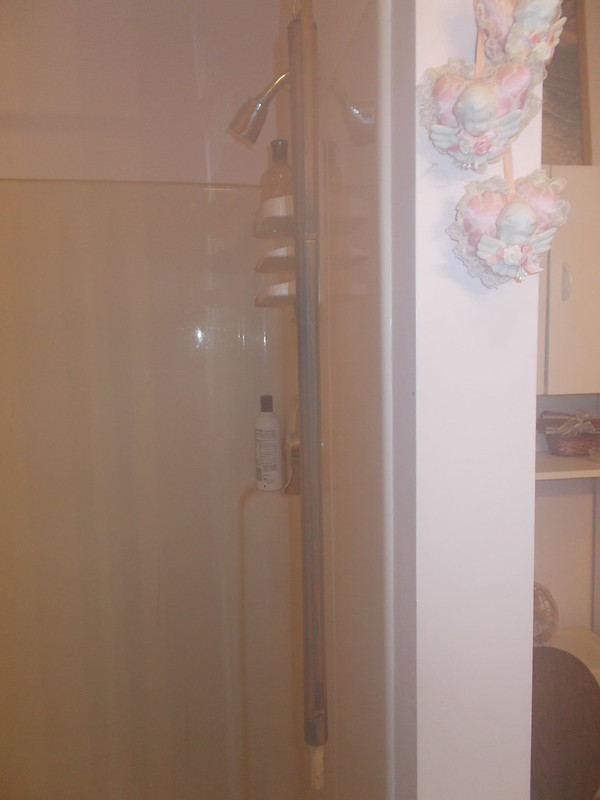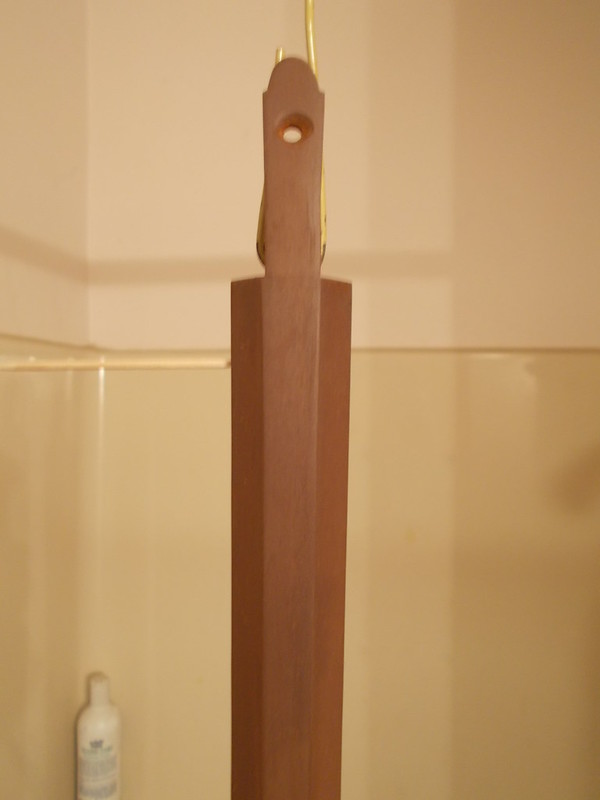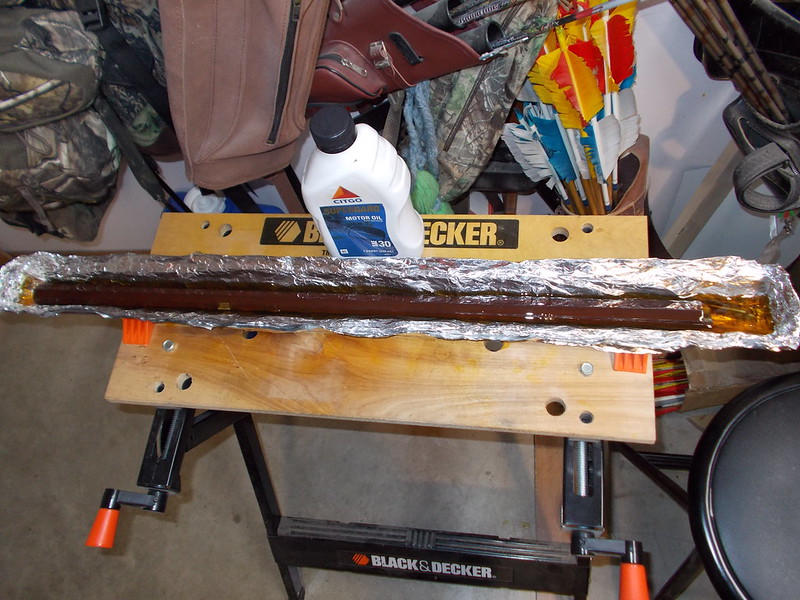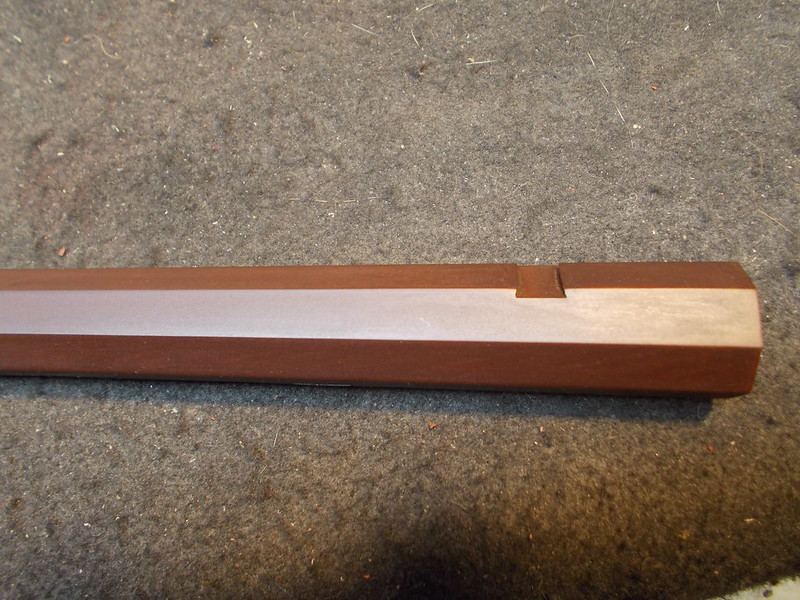azsixshooter
36 Cl.
I've been working on this flintlock GPR off and on for around 18 months now. I'm getting close enough to completion that I want to really push to get her finished. I recently was gifted a couple of .50 cal caplocks and after shooting them I'm really excited to shoot this flintlock.
I started browning the barrel last night. I draw filed the barrel then sanded with Emory cloth going all the way to 600 grit. Before starting the browning process I decreased with 91% alcohol and plugged the bore with a wood plug and the flash hole with a toothpick.
Last night I applied the first coat somewhat generously making sure all surfaces where wet but not dripping. 3 hrs later I applied a 2nd coat sparingly just moistening the surface of the barrel flats and corners. 3 hrs later I attempted to card with hot water but I think I messed up.
I didn't have any stiff felt or denim so I cut the thick cargo pocket flap off some old shorts and used that. I didn't scrub aggressively, I pretty much just wiped back and forth because I was afraid I'd run the first thin layers of browning off and make the process take even longer.
I repeated that process 2 times last night for a total of 4 applications and another 2 today. I wasn't really liking how it was looking. The flats were getting brown and rusty but the corners are basically black so they look like stripes running the length of the barrel. And the rusted flats even were looking kind of streaky, especially around the stamped words.
After the last application I got a scrap of bridle leather and softened it in hot water and squeezed out everything I could down to bare leather. Using the coarse side I scrubbed the barrel really aggressively and really scrubbed off a lot of the rust, although it didn't take it down to bare metal. It actually looks a lot better after drying it off, much of the streakiness is gone and it looks more even.
I'm not really sure if this is going well or not because I don't know what it is supposed to look like at this point. I'm planning on doing some more applications this week, but I want to also brown the rest of the metal pieces before I use up all the solution on the barrel. I still have quite a bit left so I think I'll be good.
I'm wondering how you guys think it looks and if I should card aggressively with the leather or just use some kind of fabric like I was before. The leather actually created kind of a dark slurry and stained my hands black even though it was just regular plain brown leather. It seemed to help blend in the browning pretty good, but if there is any reason not to be using leather I'd like to know.
Thanks guys, any advise is greatly appreciated.
Steve


I started browning the barrel last night. I draw filed the barrel then sanded with Emory cloth going all the way to 600 grit. Before starting the browning process I decreased with 91% alcohol and plugged the bore with a wood plug and the flash hole with a toothpick.
Last night I applied the first coat somewhat generously making sure all surfaces where wet but not dripping. 3 hrs later I applied a 2nd coat sparingly just moistening the surface of the barrel flats and corners. 3 hrs later I attempted to card with hot water but I think I messed up.
I didn't have any stiff felt or denim so I cut the thick cargo pocket flap off some old shorts and used that. I didn't scrub aggressively, I pretty much just wiped back and forth because I was afraid I'd run the first thin layers of browning off and make the process take even longer.
I repeated that process 2 times last night for a total of 4 applications and another 2 today. I wasn't really liking how it was looking. The flats were getting brown and rusty but the corners are basically black so they look like stripes running the length of the barrel. And the rusted flats even were looking kind of streaky, especially around the stamped words.
After the last application I got a scrap of bridle leather and softened it in hot water and squeezed out everything I could down to bare leather. Using the coarse side I scrubbed the barrel really aggressively and really scrubbed off a lot of the rust, although it didn't take it down to bare metal. It actually looks a lot better after drying it off, much of the streakiness is gone and it looks more even.
I'm not really sure if this is going well or not because I don't know what it is supposed to look like at this point. I'm planning on doing some more applications this week, but I want to also brown the rest of the metal pieces before I use up all the solution on the barrel. I still have quite a bit left so I think I'll be good.
I'm wondering how you guys think it looks and if I should card aggressively with the leather or just use some kind of fabric like I was before. The leather actually created kind of a dark slurry and stained my hands black even though it was just regular plain brown leather. It seemed to help blend in the browning pretty good, but if there is any reason not to be using leather I'd like to know.
Thanks guys, any advise is greatly appreciated.
Steve







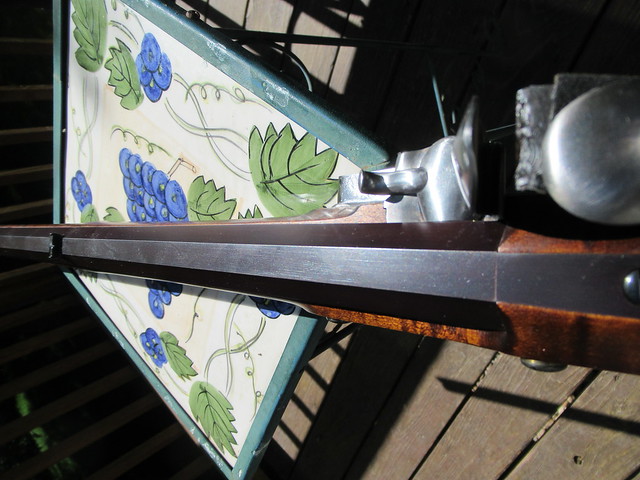 001
001